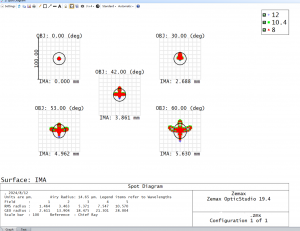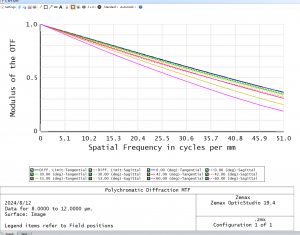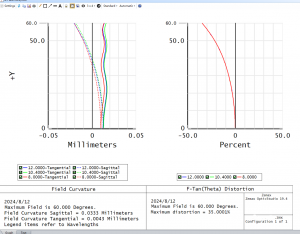Wide-angle thermal imaging lenses are at the forefront of thermal camera technology, providing an expansive field of view essential for various applications. Unlike their narrow-angle counterparts, these lenses offer a broader perspective, crucial for comprehensive monitoring and detailed detection. They work by transforming infrared radiation into visible images that highlight temperature differences, a capability that is vital in fields such as surveillance, firefighting, search and rescue, industrial inspections, and environmental monitoring. Our case study demonstrates how their advanced wide-angle lenses significantly enhance situational awareness and improve the accuracy of thermal data analysis.
This particular wide-angle lens features a focal length of 5mm, offering a horizontal and vertical field of view of 90° and 70°, respectively, with a diagonal field of view extending to 120°. Such a wide coverage is ideal for extensive surveillance and precise thermal inspections. The lens achieves distortion levels below 30%, ensuring that images are mostly free of significant optical distortions. Its MTF rating of over 40% at 30 lp/mm provides high-resolution imaging capabilities necessary for capturing fine thermal details. Furthermore, with a relative illumination of 70%, the lens delivers consistent image brightness across its entire field of view, reducing vignetting and enhancing overall image quality.
Spot Diagram: The spot diagram reveals the lens’s performance at various field angles, showing compact and well-contained spot sizes within the Airy disk. This indicates superior focus and minimal aberrations:

Modulation Transfer Function (MTF): The MTF chart illustrates the lens’s resolution capabilities:
Field Curvature and Distortion:


Shanghai Optics’ wide-angle thermal imaging lens represents a significant advancement in thermal imaging technology. Its ability to provide a broad perspective and high-quality imaging makes it a valuable tool for a variety of critical applications. The lens’s design and optical characteristics ensure reliable and accurate performance, enhancing situational awareness and enabling effective monitoring and detection across multiple fields.
Contact Shanghai Optics today! We’d be more than happy to discuss your projects and how to best bring them to fruition.